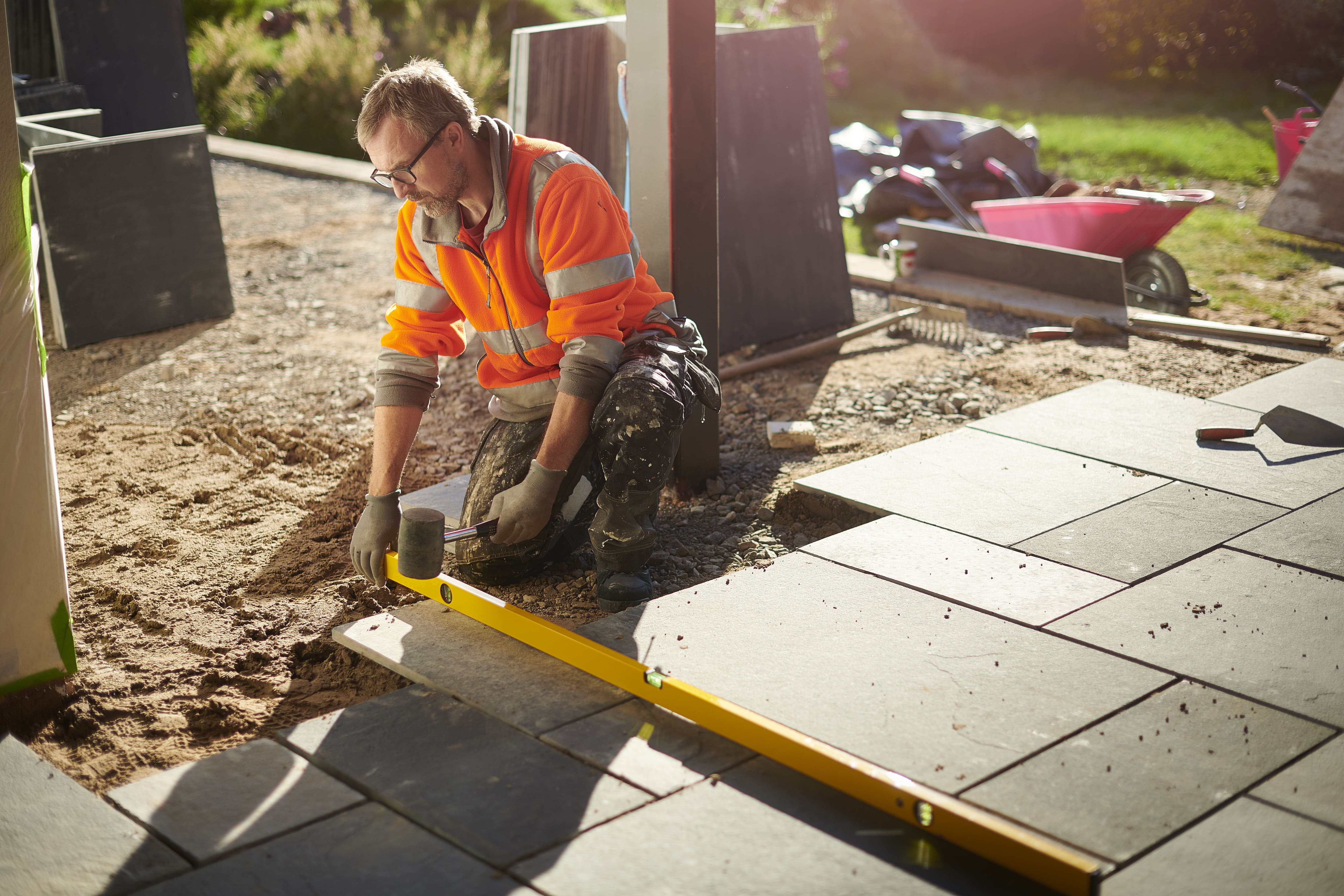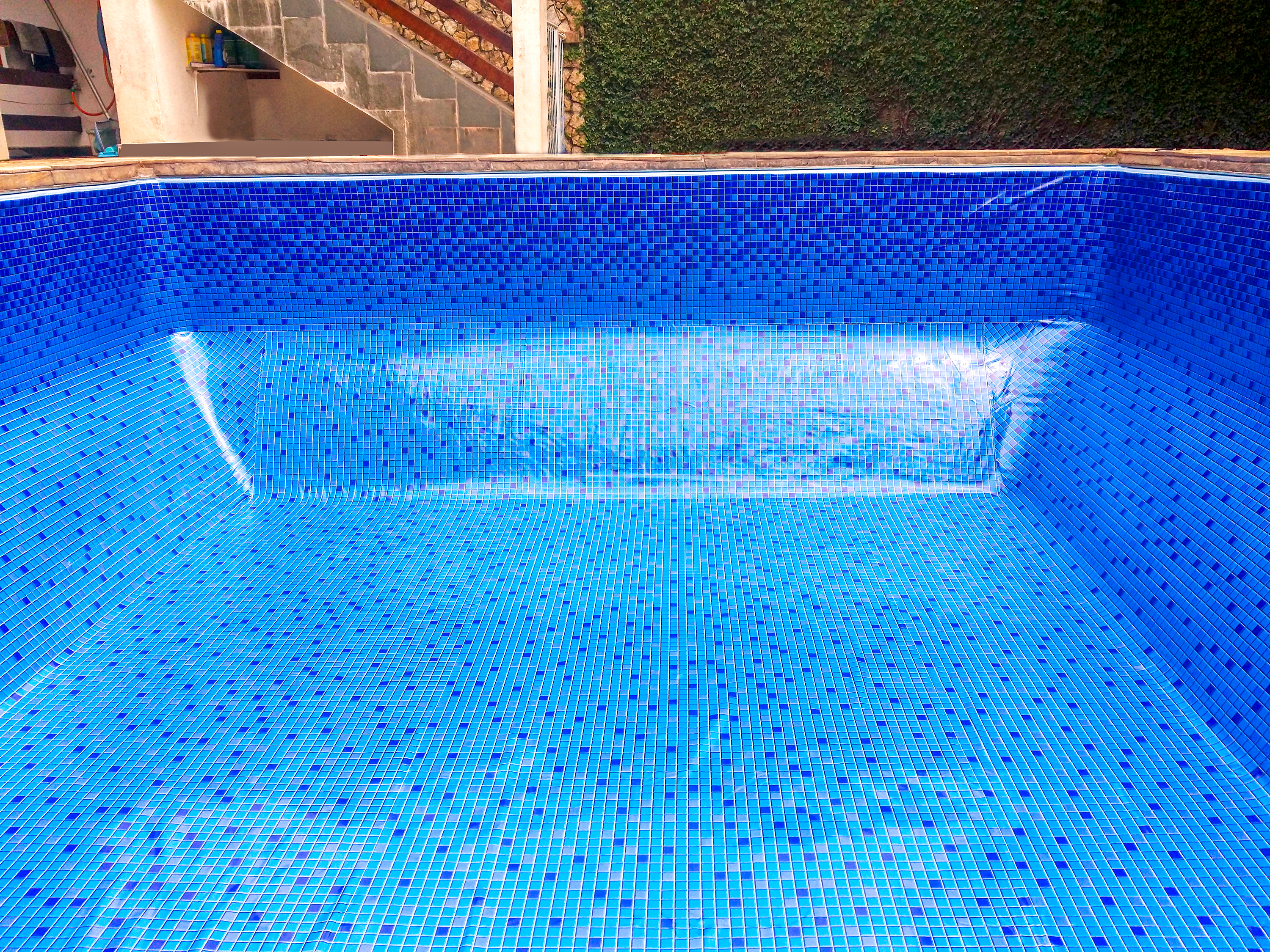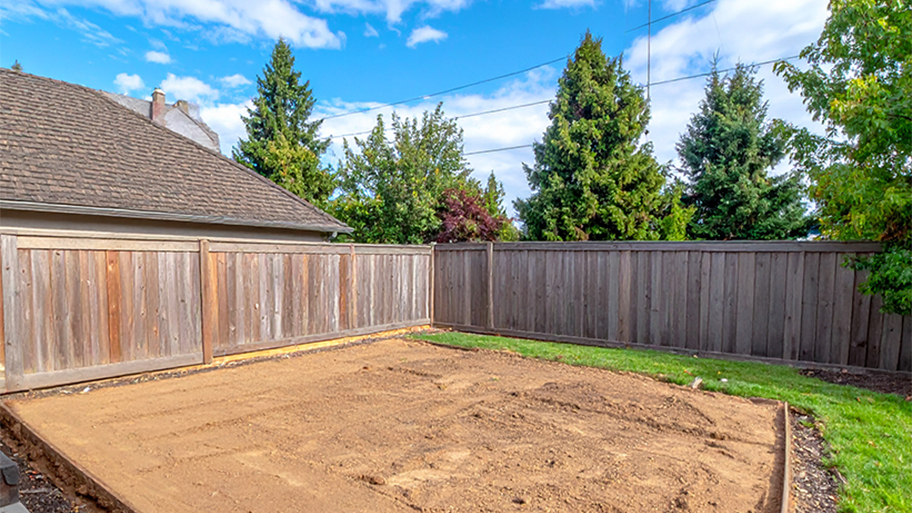
If you’ve been considering installing a new pool in the Buckeye State, this guide will help you understand inground pool costs in Columbus.
Don’t forget the patio lounge set


Bluestone is one of the most popular paver types for building a patio. Learn how to lay a bluestone patio by following this step-by-step guide.
Difficulty: Challenging (4/5)
Laying your own bluestone patio can be a physically taxing job. This DIY also requires precise excavating skills to create a drainage slope. Any mistakes made here can cause damage to your home’s basement and/or foundation.
Total Project Time: 2 days
This job can likely be done in a day if you have people to help. However, this DIY can take at least two days when installing on your own.
Cost: $25–$32 per square foot
The cost of this project will depend on the patio size. Natural bluestone pavers range from $5–$12 per square foot. Gravel and leveling sand will add an additional $20 per square foot. The total project cost will increase if you need to buy or rent any of the necessary tools.
Bluestone slabs or pavers
Gravel
Leveling sand
Moss
Measuring tape
Flags, stakes, or spray paint
Chalk
Phone/camera
Ladder
Level
1-inch wood block
Tape
Spade shovel
Garden hose
Rubber mallet
Bluestone is a type of sedimentary stone commonly used in landscaping and construction. Known for its sleek look and durability, bluestone comes in a variety of natural or customized shapes and sizes.

Follow this step-by-step guide to build a beautiful bluestone patio in your yard.
First things first—determine whether you’ll be using broken bluestone pieces for a natural look or evenly cut bluestone tiles for a clean look.
Measure and mark—Measure out the patio area and outline it with flags, stakes, or spray paint. Purchase enough bluestone according to the patio space available.
Practice the pattern—If you’re opting for a natural look, practice laying out each piece of bluestone first to figure out the best pattern for the space. Leave at least 1.5 inches between each stone if you plan to fill in the space between with moss.
Number the pieces—Once you have a pattern you like, use chalk to number each stone. Take a picture that you can use as a guide later. You may have to use a stepping ladder to get everything in the picture. Skip this step entirely if you’re creating a clean look with pre-cut pavers.
All patios need to have a slight slope for proper drainage. As a general rule of thumb, the base layer of a patio should always slope away from the house to prevent excess water build-up around the basement and foundation.
Grade the slope—The patio base layer should slope about an inch every four to six feet. There are many ways you can do this, but the simplest way is to tape a one-inch block of wood to one end of a four to six-foot-long level. Continuously check the slope as you dig.
Excavation—Use a spade shovel to dig up the sod and topsoil. Dig deep enough so that the bluestone pavers sit slightly above or at ground level, accounting for the gravel base, leveling sand, and width of the bluestone. It’s important to keep digging about six inches outside of the outlined patio perimeter to account for paver edging.
Gravel base—A layer of gravel base provides additional drainage and overall patio support. Pour a layer of gravel and wet it down with a garden hose. You may have to use a rake to evenly distribute the layer while keeping the angle of the slope. Then, use a plate compactor or a hand tamper to flatten out the area.
Pour the leveling sand—Pour a layer of leveling sand about an inch thick over the area. This layer helps the stone settle and stay in place. Spray the sand lightly with a garden hose to dampen it. This will help keep dust from kicking up as you smooth it out. Then, use a garden rake to even the sand out over the area while still keeping the graded slope in mind.
Use your reference picture to lay the numbered bluestone pieces back in the pattern you created at the beginning of this project. Check the level as you go to make sure the stones are relatively level to each other and the grade is still holding up.
If you opted for natural bluestone pieces vs even pavers, it may leave you with space between each stone. Finish the look of your patio by filling in the spaces between the stone with moss.
Remove the dirt—Use a gardening spade to remove an inch of dirt between the stones.
Plant the moss—You’ll need a bucket of water for this step. Take the moss and gently dip it into the bucket of water to soften it. Press the moss into the gaps, using a utility knife to remove excess edges.
Bluestone is one of the most popular patio materials for a good reason. Some benefits of bluestone include:
Slip resistance
Durability (can withstand strong weather)
While the pros outweigh the cons, the cost of bluestone is a big downside that can keep homeowners from moving forward with the project.
Adding a bluestone patio to your yard can be a big undertaking. Here are a few quick answers to the most common bluestone questions.
There are two main types of bluestone—Pennsylvania bluestone and New York bluestone.
There are four main types of bluestone finishes—natural cleft, honed, flamed, and brushed.
Some neighborhoods require permission before building anything on your property, even a patio. Avoid fines and charges by inquiring with your HOA or local zoning office first.
From average costs to expert advice, get all the answers you need to get your job done.

If you’ve been considering installing a new pool in the Buckeye State, this guide will help you understand inground pool costs in Columbus.

The cost of pool liner replacement in Columbus depends on the size and shape of your pool, as well as the liner material and type. Here’s how the costs break down.

Installing a pool heater ensures that your pool gets used as much as possible, but is the pool heater cost worth it? Let’s find out.

Need to refill your pool after cleaning or the winter season? Use this guide on how to fill a pool with water for a few different affordable methods.

You can build an above ground pool on uneven ground if you take the time to level it. This guide will show you how to level ground for a pool in a few easy steps.

Swimming pool issues like algae or a clogged filter can happen to anyone. Learn more about common pool problems and how to fix them quickly and easily.